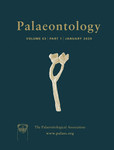Reg. Charity No. 1168330

With 1429 animal species, the Triassic Cassian Formation in the Dolomites, Southern Alps (Italy), yields the highest species richness reported from any spatially constrained pre‐Quaternary formation known to science. The high preserved diversity is partly attributable to a high primary diversity governed by the tropical setting, increasing alpha diversity, and the breadth of habitats spurring beta diversity. More important is the excellent preservation of fossils and the ease with which they can be extracted from the poorly lithified sediments. We propose the term ‘liberation Lagerstätten’ to capture this preservational window. In contrast to conservation Lagerstätten, liberation Lagerstätten like the Cassian Formation originate from normal marine conditions but low‐grade diagenesis. Molluscs contribute substantially to species richness, comprising 67% of all invertebrate species in the Cassian Formation. The gastropod dominance (39% of all species) is nearly as great as in Recent tropical settings, contradicting the concept of a substantial Cenozoic rise.